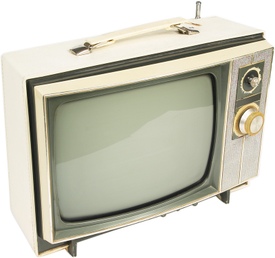It’s too much you – why you shouldn’t be in your own commercials
November 9, 2007
 A day or so ago, I donned a Kevlar suit and stated the truth.
A day or so ago, I donned a Kevlar suit and stated the truth.
99% of business owners should not star in their own marketing – especially TV and radio.
As I predicted, the article generated many phone calls and e-mails. Lots of people took it personally.
Exactly.
You see, when you start in your own commercial, your message, by default, is about you. How long you've been in business, how many XY or Z you sell a month, that your granddad started the business at the turn of the century, etc.
Here is a harsh but true fact. Your potential customers could care less. They care about themselves. And what they need and want.
When they see a TV commercial or print ad or website – they want to see themselves. They want to see their problems solved or even better, averted. They want to see how their lives could be better, easier, faster, more posh or sexier. They do not want to see your grandkids. No matter how cute they are.
I mentioned that you look a little uncomfortable and stiff in your spots. But it's more than that. It goes beyond that fact that while you're great at what you do, what you do isn't acting in front of a camera.
It is much more than the reality that spokespeople are prettier than most of us average joes or janes. It boils down to a fundamental reality. Your customers are only interested in you because you can do something for them. That's why they will give you their most precious resources – their time and attention.
Of course, there are exceptions to every rule. Sometimes, you and only you can star in your marketing. We'll delve into that one next.
More
![Reblog this post [with Zemanta]](http://img.zemanta.com/reblog_e.png?x-id=1a9b8138-2806-4ac5-a9d9-5318c9551d4c)

![Reblog this post [with Zemanta]](http://img.zemanta.com/reblog_e.png?x-id=986e9b2c-fc67-454e-bd22-b70d4cd80a7f)


![Reblog this post [with Zemanta]](http://img.zemanta.com/reblog_e.png?x-id=20e578e4-a2cc-422b-bca9-9b37eba57429)

![Reblog this post [with Zemanta]](http://img.zemanta.com/reblog_e.png?x-id=c32ff083-05a5-4a6c-a8b9-9b0e103736b3)

![Reblog this post [with Zemanta]](http://img.zemanta.com/reblog_e.png?x-id=38b65cd0-9a27-4455-8324-459e204d6315)

![Reblog this post [with Zemanta]](http://img.zemanta.com/reblog_e.png?x-id=ee571a52-b94f-4155-9a69-c279f758dfdf)

![Reblog this post [with Zemanta]](http://img.zemanta.com/reblog_e.png?x-id=168c8104-6c66-4adc-8a5d-4effd7bd6663)

![Reblog this post [with Zemanta]](http://img.zemanta.com/reblog_e.png?x-id=a23dd9c3-64c8-4007-bdb1-09bdbeeb49d7)